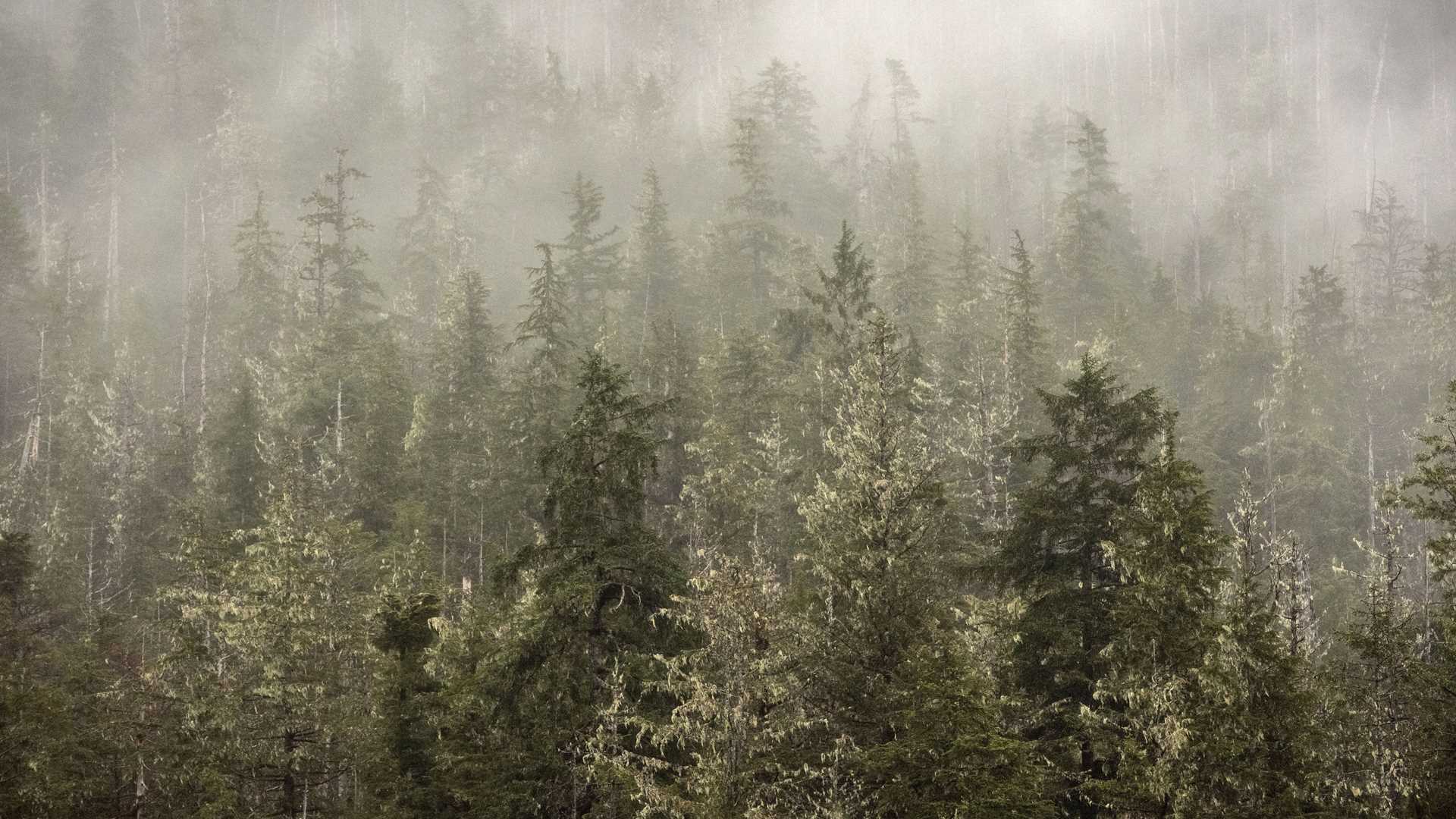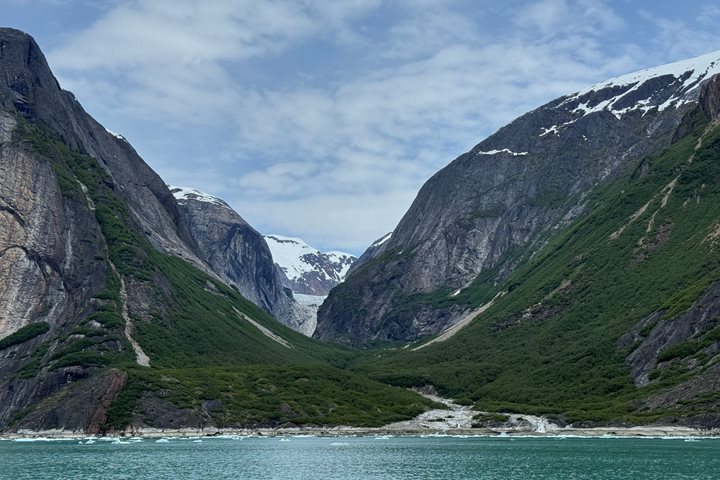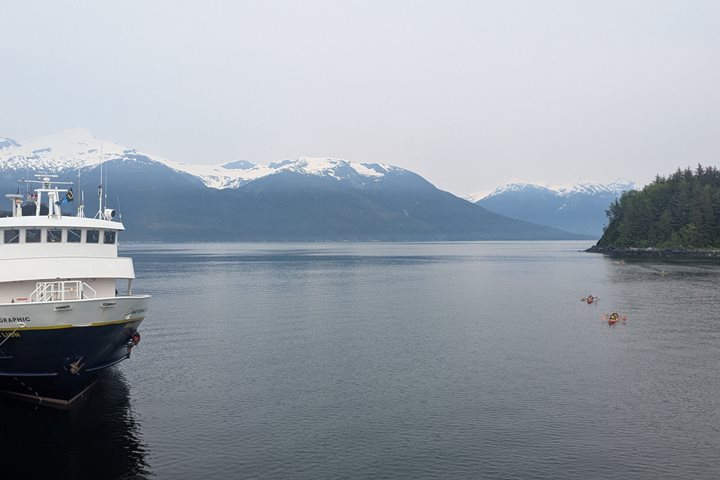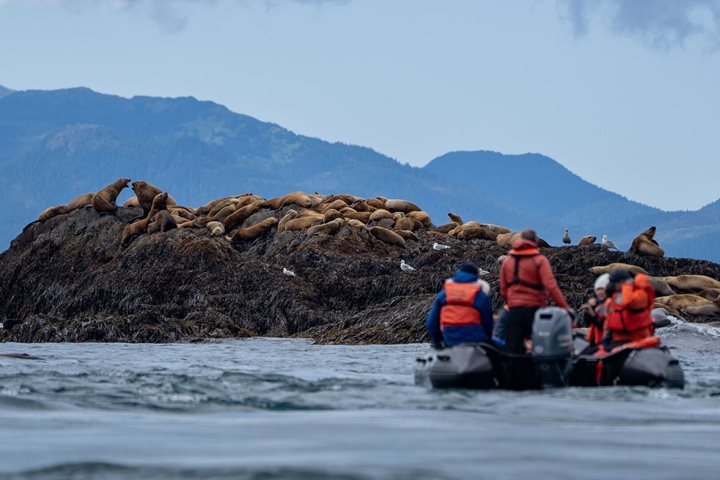Early this morning, National Geographic Sea Lion continued her journey north, heading towards our morning destination of Pavlof Harbor. Located on the northern end of Chichagof Island, this sheltered anchorage at the entrance of Freshwater Bay, a much larger inlet that cuts deeply into Chichagof Island, has been historically important to Native and non-native peoples for many generations. The Tlingit from Angoon used this site as a summer campsite. Families spent the summer and fall harvesting from the land and sea, building up supplies for the winter. These traditions have been active among the Angoon Tlingit for thousands of years.
Non-native people used this site for its easy access to freshwater and to trade with the Tlingit for furs and food supplies. Pavlof Harbor was originally called Gavan Pavlof, named by Russian fur traders in 1849.
We spent the morning exploring by both land and sea. Groups were divided, and as some people went out to kayak, others headed into the forest to explore the fortress of the brown bear! Chichagof Island is part of a group of islands known as the ABC islands, famous for the size of their brown bear populations. Bears spend time here at Pavlof because of the small river and waterfall that accesses a small lake. Three species of salmon use these waters for spawning. This draws many people who visit to see bears, salmon, and the unique environment in the rich temperate rainforests of Alaska, which is created through cooperation and the sharing of resources.
Leaving the beach behind, we dipped under the canopy of Sitka alders, western hemlocks, and Sitka spruces into a quiet, shaded landscape covered by diverse and unusual shrubs and plants. Very little rain has come to Southeast Alaska during this early summer. As we were wrapped in the soft greens of the rainforest, tiny spots of color began to show…many, many strands of spotted coralroot. This unusual orchid, a saprophyte, decorated the forest floor. Coralroot orchids are nearly leafless and primarily live on dead organic matter and the roots of other plants with the help of mycorrhizal fungi.
While half of our group explored the forest, the other half jumped into kayaks and explored the shoreline of Pavlof Harbor. Halfway through the morning, our groups changed from sea to land activities and vice versa. Each group took time to explore. Just before lunch, we all returned to National Geographic Sea Lion to enjoy our midday meal. After lunch, the staff and bridge crew began a serious lookout for whales! By late afternoon, we were all called to the bow after a group of humpback whale blows were spotted. For the next two hours, we watched humpback whales as they engaged in bubble net (or cooperative) feeding! In a small area of water, we followed back and forth as the whales surfaced, breathed, and dove….just over three minutes later, they all surfaced with mouths agape, taking in large quantities of water and small schooling fish. It was a magnificent sight seen in few places on the planet. It was a gorgeous afternoon with sunshine, light breezes, and humpback whales working hard for a daily meal in their summer habitat!
As the afternoon passed to early evening, we gathered in the lounge for cocktails and hors d’oeuvres. Our staff began our first recap, a Lindblad tradition each evening during cocktail hour. As the first staff member began her talk, we saw the expedition leader step to the phone behind the bar. Moments later, the announcement was made, “Killer whales off the bow!” The entire lounge emptied as everyone made their way outside for a rare sighting of killer whales. What a first day, and there is still so much more to explore in a place where the forests and mountains fall directly into the sea, and the summer sun gives us at least 19 hours of light each day. Who knows what surprises and gifts from the natural world will grace our paths as we continue our journey?







